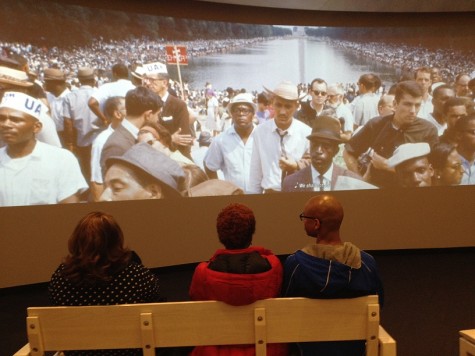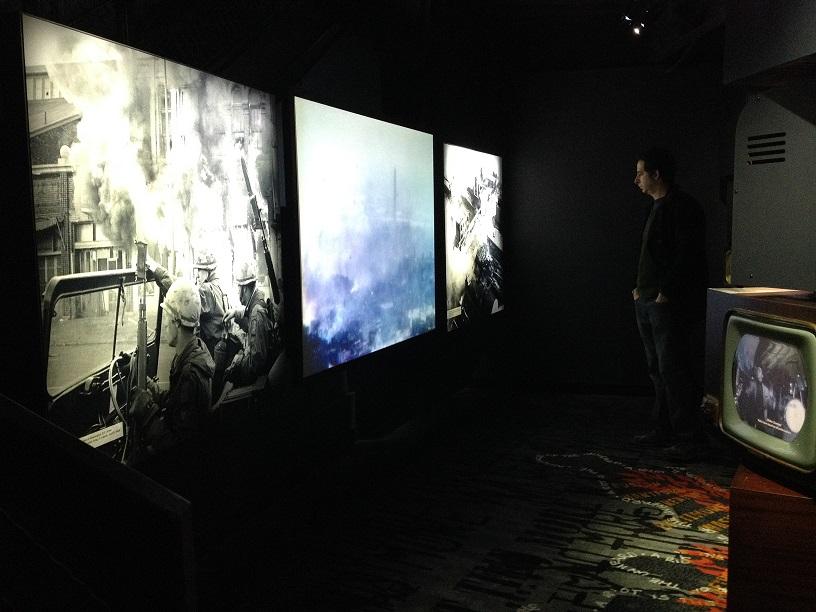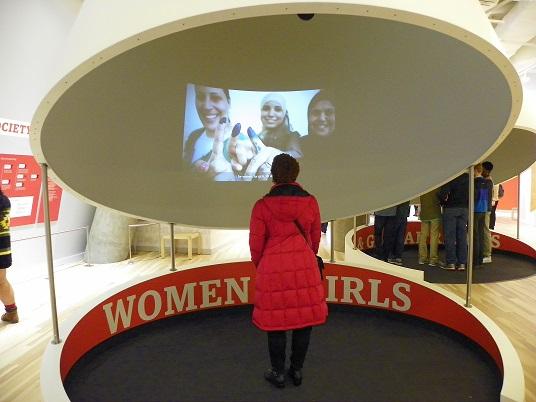Magnet students visit National Center for Civil and Human Rights museum January 27
January 28, 2015
On January 27, Magnet students of all grade levels embarked on a day-long journey back in time as they learned about the achievements from significant historical figures and their impact on modern society.
In close proximity to the birthplace of Dr. Martin Luther King Jr., The National Center for Civil and Human Rights opened up seven months ago for tourists and visitors. The $70 million attraction boasts 2.5 acres and 42, 000 square feet. Adults can purchase tickets at $15, while students and teachers can obtain them for $13 each.

Senior Solomon Fortune sits with senior Remy Usman and 9th Magnet literature and composition teacher Mrs. Husband as they watch a short film depicting the civil rights movement’s triumphs.
The exhibitions include a letter collection dedicated to Martin Luther King Jr., a gallery about segregation, and a section of current feminists and LGBTQA activists around the world. The facility intends to connect the historical aspect of the civil rights movement to global, current-day human rights.
“I learned that a lot of young people took action in the civil rights movement. It shows that people of all ages can work towards changing the world,” sophomore Alison Adams said.
The museum truly brings history to life with its ample interactive features. For example, in a dark room, an old-fashioned diner counter sits at a wall. The tourist closes his or her eyes and puts on headphones that bark common insults blacks heard in the 1950s.
On the countertop, instructions for the simulation visibly lay out: “See how long you can last.” The voices grow progressively louder, until the listener can hear nothing but brutal insults and the sound of his or her own heart. Furthermore, the stools rapidly shake, representing whites pushing minorities off of them. These models offer a sense of empathy and poignancy by allowing the tourist to truly put him or herself in the position of the oppressed.
“The sit-in simulation was my favorite part about the museum. I didn’t realize how harsh the sit-ins were,” junior Emory Perry said.
The museum signifies a drastic change in history; an area once overwhelmingly filled with hatred, racism, and bigotry now promotes integration and equality for everyone. It resembles a transition that society should strive to advocate for, in hopes that no one will make exclusions based solely on gender, orientation, or the color of a person’s skin.

